Perhaps the most anticipated summer holiday, the Fourth of July brings back memories of parades, family gatherings and fireworks---all accompanied by warm temperatures, sunshine and bright blue skies.
Unfortunately, nice weather is not always the case on Independence Day. Here in Ohio, we have experienced a wide variety of weather during this holiday over the years.
Temperature and precipitation data and records have been kept since the late 1800s in large and small cities throughout Ohio.
Let's look back at some historic holiday weather from around the Buckeye State.
As we all probably know, summer can bring some incredibly hot and humid conditions. July is statistically the hottest month of the year in Ohio. It should come as no surprise we have endured some high heat on the Fourth of July.
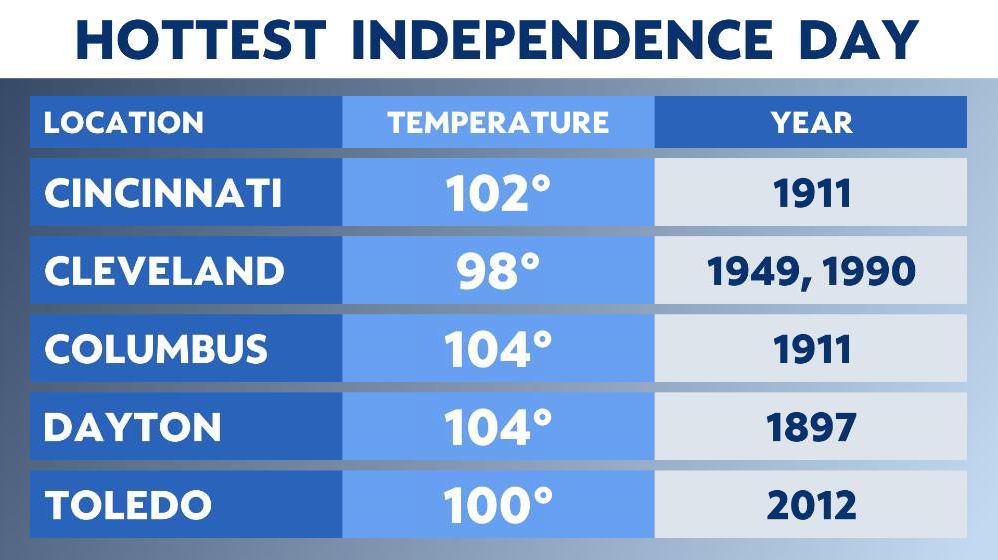
Cities in southern and central Ohio had their hottest July 4 back in the late 1800s and early 1900s, while residents of northern Ohio had their hottest Fourth of July in more recent years.
In particular, 2012 was quite hot throughout the state. All five cities listed above had a top 5 hottest temperature that year. In 2018, Cincinnati and Cleveland had a top 10 hottest temperature.
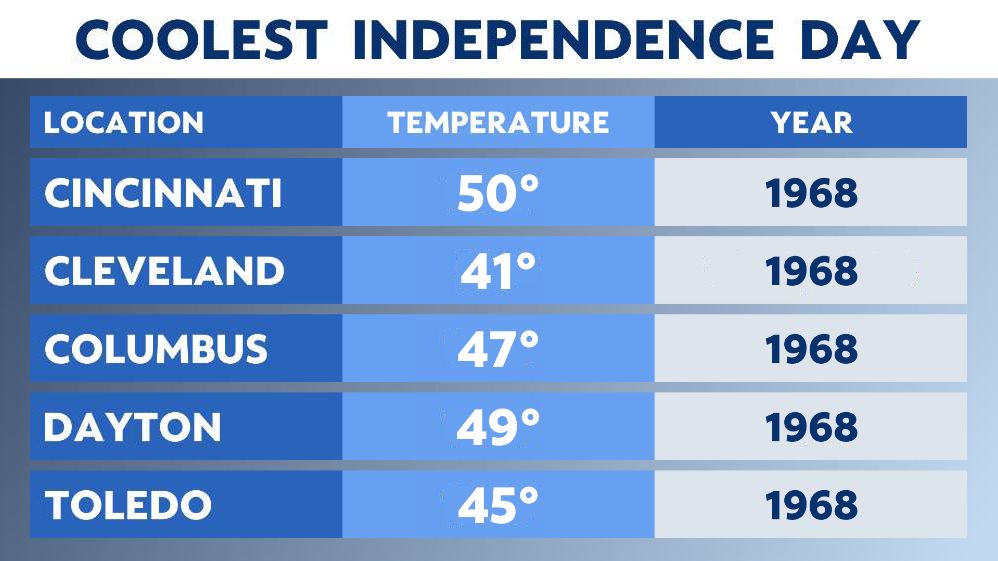
Some years can be exceptionally cool as low temperatures have plummeted into the 40s on rare occasion. A couple of areas have even dipped into the 30s---Norwalk (34 in 1895) and Warren (37 in 1968).
While these temperature extremes may seem a little shocking, most Fourth of Julys feature typical high temperatures in the lower-to-middle 80s and low temperatures in the lower-to-middle 60s.
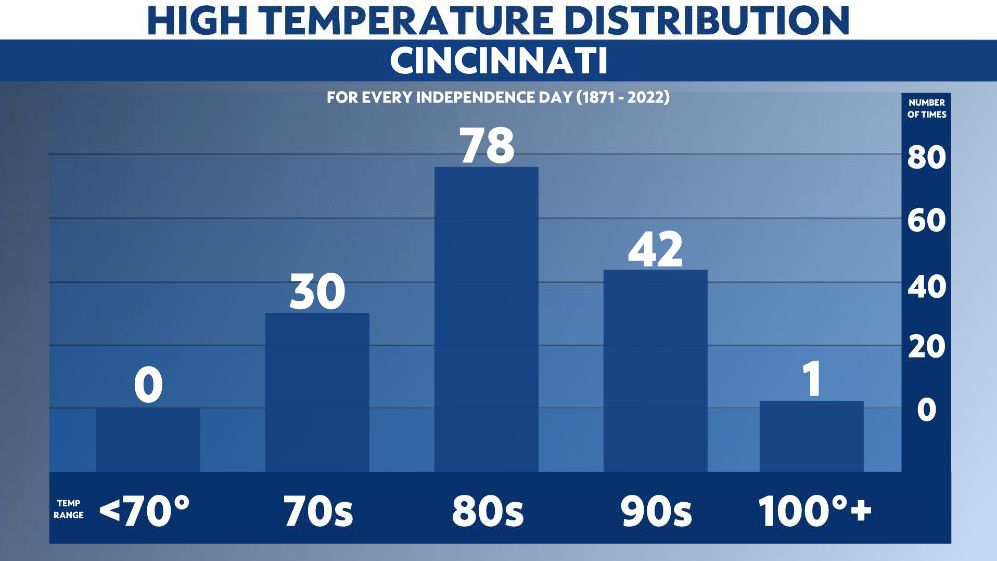
-
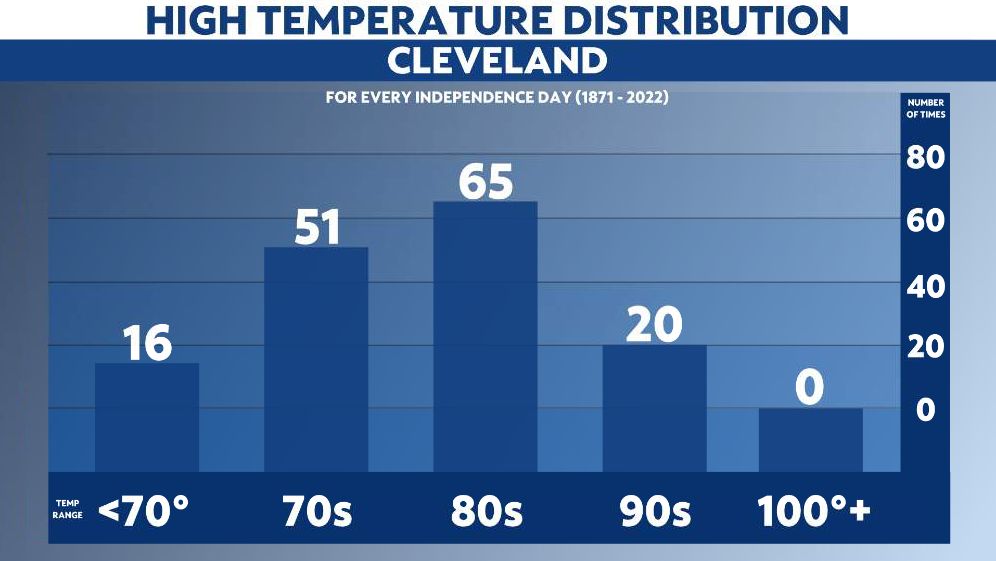
-
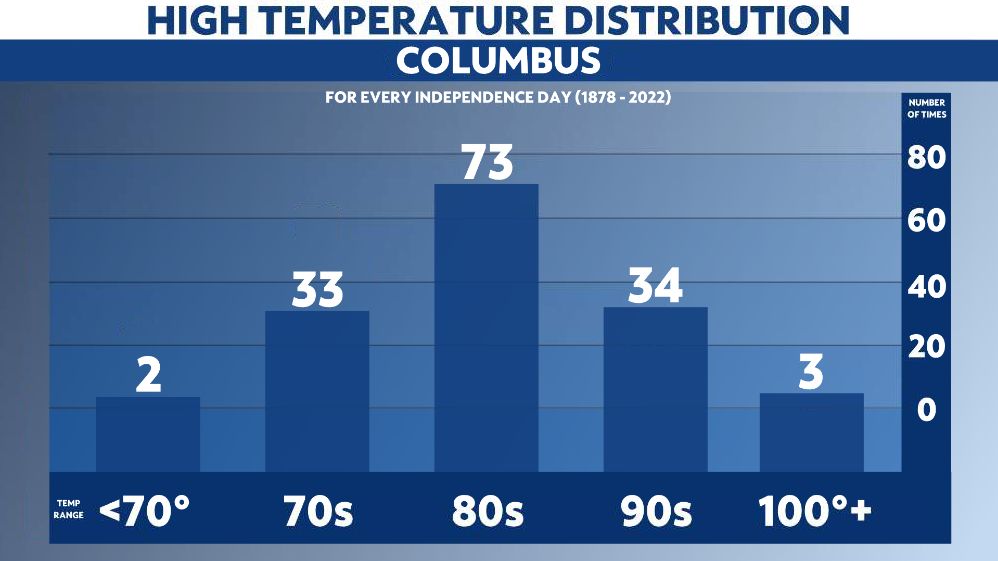
The graphs above depict how many Independence Days have reached a particular temperature range. It can help us visualize where we have been and what we can usually expect for the holiday.
Most of us hope for a dry holiday so the fireworks shows can go off without a hitch. Looking at the historic data, there is actually a decent chance of staying rain-free on the Fourth of July.
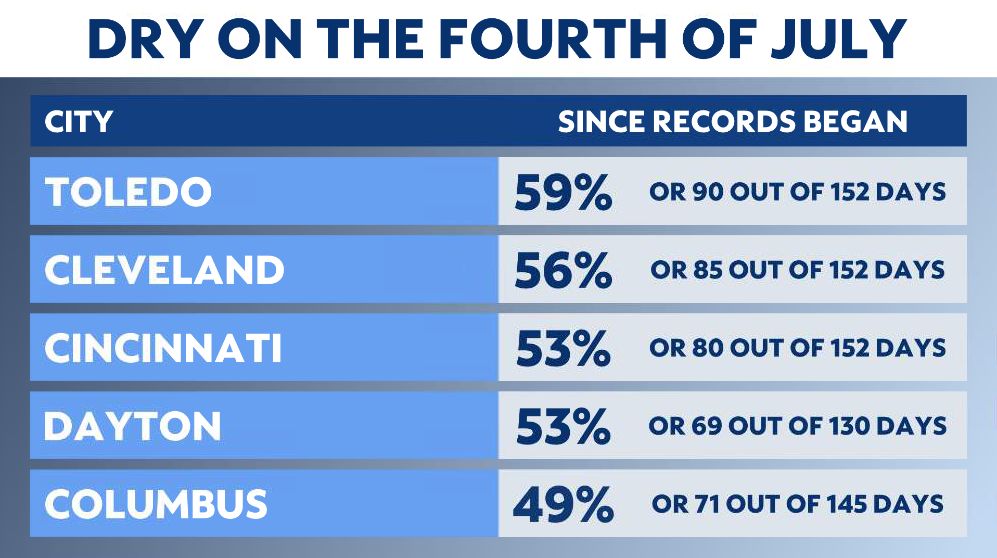
While no rain is great, sometimes drought conditions may lead to cancelled fireworks because of heightened fire danger. On the flip side, too much rain and hazardous lightning can also postpone our holiday festivities.
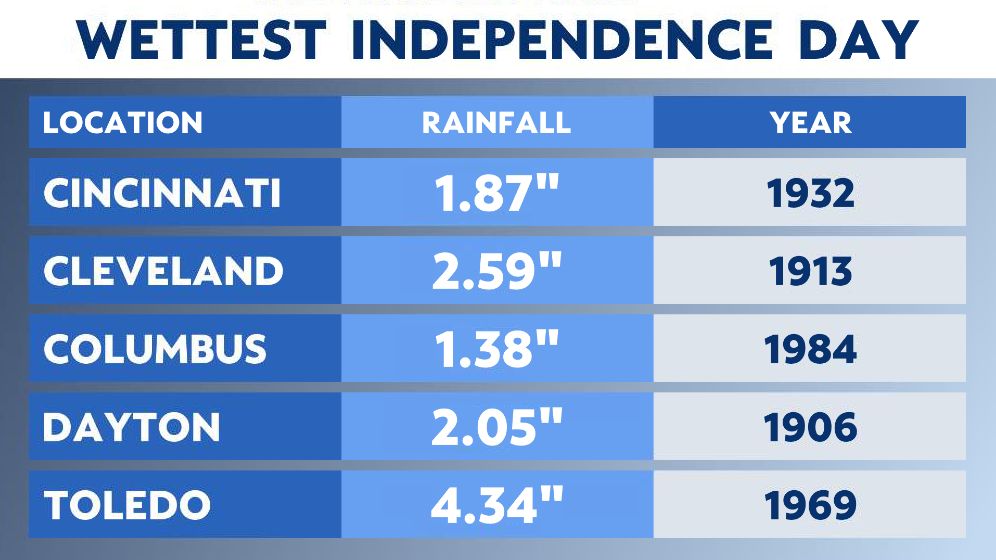
Severe weather and flooding can be especially dangerous on Independence Day, as people are outdoors and potentially far from safe shelter.
One notorious incident occurred during the evening hours of July 4, 1969, in northern Ohio. A powerful line of storms brought 100 mph wind gusts and double-digit rainfall totals in a few hours. This is known as the Ohio Fireworks Derecho.
If you are curious about this year's Fourth of July forecast, be sure to click here.
Our team of meteorologists dives deep into the science of weather and breaks down timely weather data and information. To view more weather and climate stories, check out our weather blogs section.



)